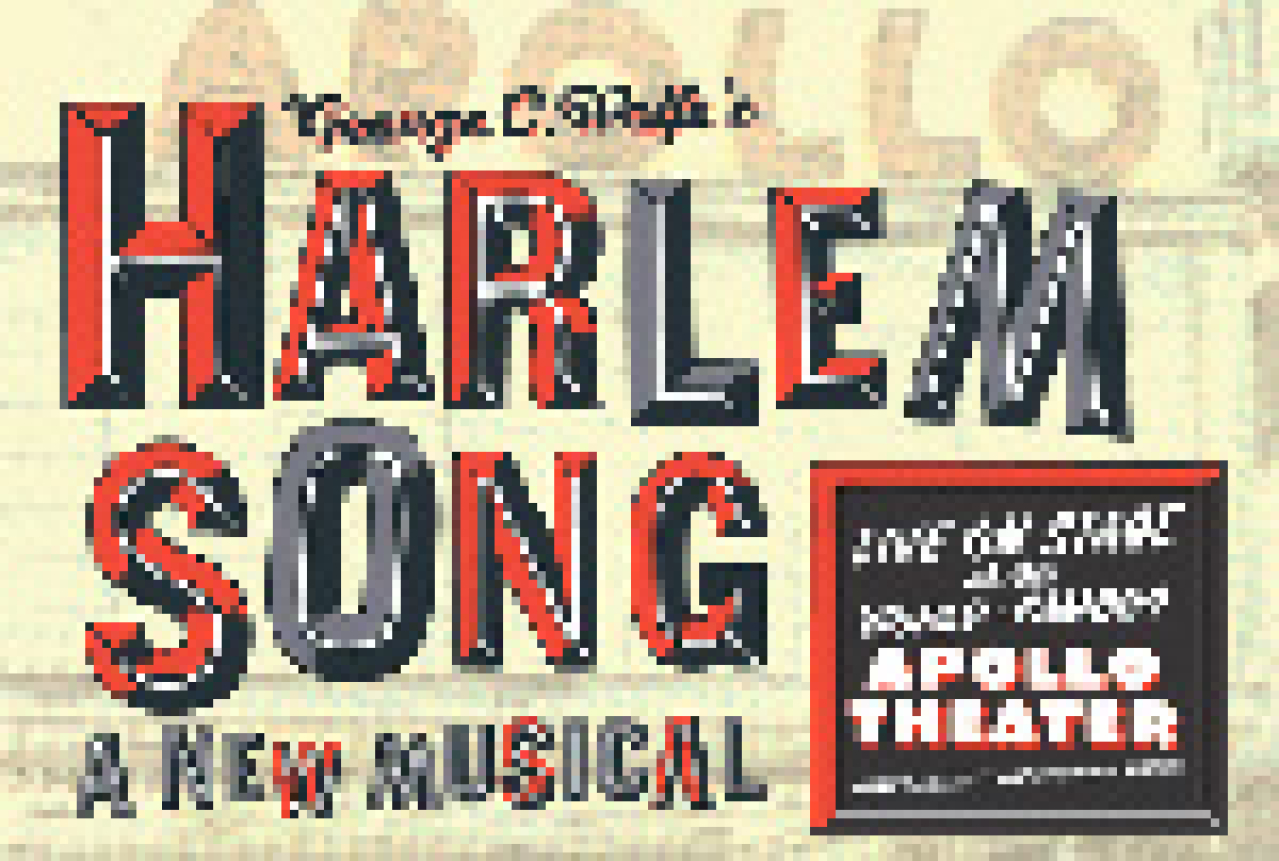Harlem Song

(Photo: Michal Daniel)
If you’ve been looking for an excuse to finally visit the world famous Apollo Theater, here it is. George C. Wolfe has brought a bit of Broadway uptown with Harlem Song, a new show that sings, speaks, and dances the praises of one of New York’s most famous communities.
At the show’s opening, The Barefoot Prophet (David St. Louis), who looks like a modern street corner mystic, magically tells how the black peoples of the world came to Harlem. He is followed by Miss Nightingale, played exquisitely by Queen Esther, greeting us like the fashionable hostess and gossipy neighbor that she is. This performer guides us through much of the evening, sometimes trading in Miss Nightingale’s Sunday best for the rags of a poor housewife or the evening gown of a blues singer. With the help of St. Louis, who also returns in several guises (including that of a floppy-haired bandleader in a nightclub scene), she takes us on a journey that spans 100 years of Harlem history.
Revues like this are usually loaded with several show-stopping solos, but this one has only two to speak of: B.J. Crosby’s delicious rendition of “For Sale” and Queen Esther’s Depression Era lament “Here You Come With Love.” Wolfe knows better than to weigh the show down with big star turns; Harlem Song is about a neighborhood, and it is the ensemble numbers that are best at capturing the inimitable spirit of the place, whether it’s the high-energy dancing of “Miss Linda Brown” or the comfortable stroll of “All Right Then.”
The show does indeed stroll along at first, coming dangerously close to seeming aimless at times. But Wolfe’s vision grows clearer as things get more serious. The best moments of Harlem Song comes when the director uses song and dance as a metaphor for social turmoil: The traditional tune “Time Is Winding Up” — in a haunting arrangement — ushers in an era of discontent in Harlem. In “A Fable of Rage in the Key of Jive,” lively and colorful dancing becomes a riot spurred by a police officer killing a young man. “Dream Deferred” is sung with a deceptively sultry lilt, but as the lyric reaches its conclusion, the accompanying saxophonist wails to a hair-raising fever pitch that foreshadows more troubles ahead. “Shake” begins as a tribute to ’60s icons like James Brown and Little Richard but goes on to document the significant social changes of the ’60s and ’70s and to chronicle Harlem’s low point, when drugs and violence took their toll.
Video projections by Batwin+Robin are used extremely well during the course of the show. Documentary footage shows old photographs and recent interviews with the neighborhood’s longtime residents telling their own personal tales about life in Harlem. Wolfe directs this aspect of the production expertly, never allowing the video to dominate the show but, rather, using it elegantly and effectively to inform and to highlight the performances onstage.

(Photo: Michal Daniel)
The musical numbers chosen for Harlem Song are an assortment of old jazz and blues tunes, poems set to music, and new songs written by Wolfe with collaborators Zane Mark and Daryl Waters. While new songs are always welcome in a new musical, those written by Wolfe & Co. unfortunately don’t stand up next to those of Ellington, Strayhorn, and Count Basie; a few bars of Strayhorn’s “Take the A Train,” for example, tell us volumes more about Harlem than Wolfe and Waters’ “Uptown Jazzmen.” In some cases, the new numbers don’t even educate in the way that they aim to: “The Niggerati Rag,” with its largely unintelligible lyrics, fails to capture the thrilling personalities that made the Harlem Renaissance what it was. But no one should attend Harlem Song thinking it’s a substitute for school. If anything, it will inspire people to seek out Langston Hughes’ poetry and Count Basie’s records, and to spend some time walking the history-laden streets of Harlem. The show is exactly what its title indicates: an ode to the neighborhood and an exciting taste of its history, its people, its culture.











